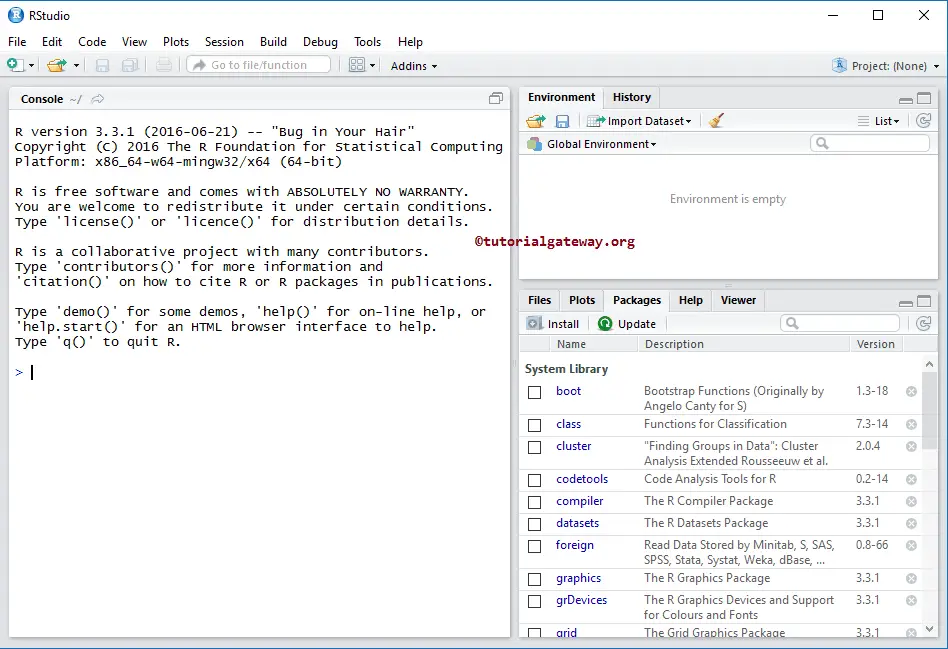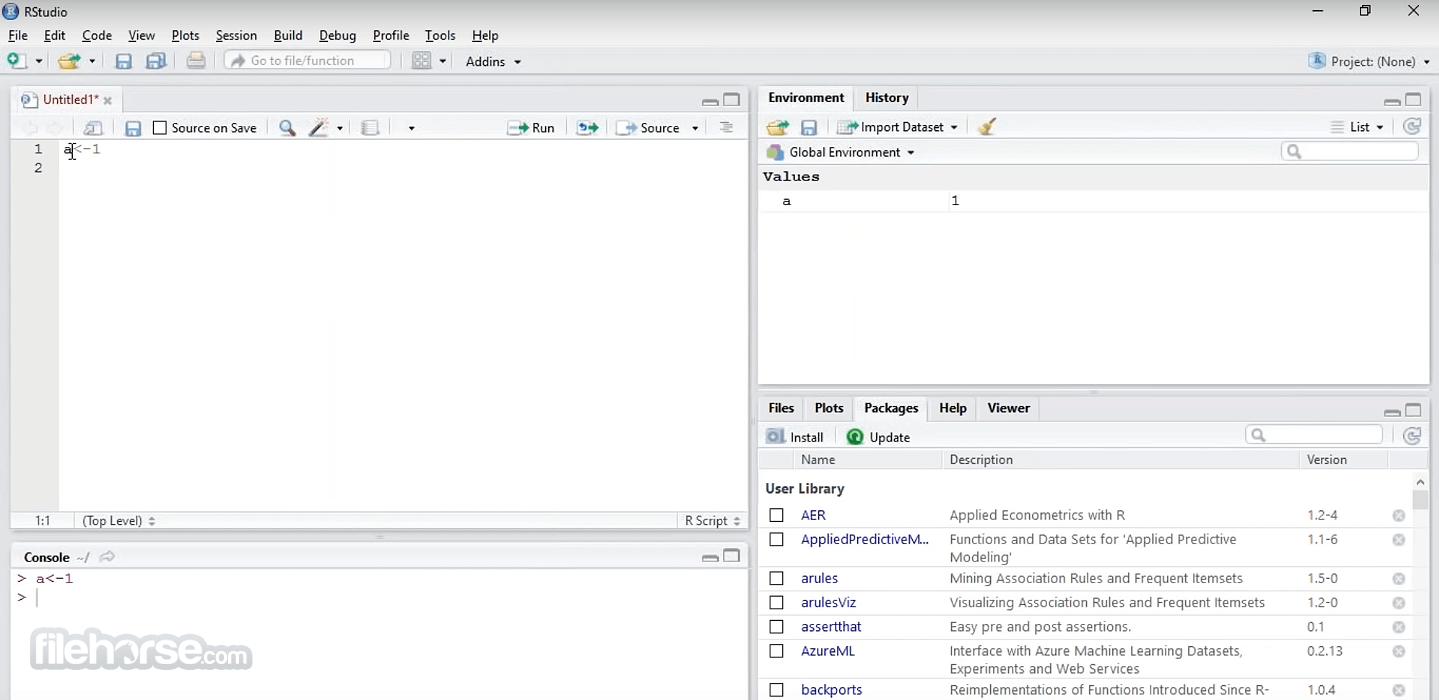

- R STUDIO DOWNLOAD PACKAGE HOW TO
- R STUDIO DOWNLOAD PACKAGE INSTALL
- R STUDIO DOWNLOAD PACKAGE CODE
- R STUDIO DOWNLOAD PACKAGE SERIES
You need to add it to the current list of library paths and make it the default if appropriate.ĭon’t forget about the forward slash in the path.
R STUDIO DOWNLOAD PACKAGE INSTALL
Let’s say you want to install and use packages in a custom library, say C:\CustomR. Adding a New Library Path for Packages - Temporary

Let’s try that by running the following commands in the R console: myPaths Install Packages… menu: To change the default, you just need to swap positions. On a one-time basis, you can simply choose where you want to install your package, but let’s say you don’t want to have to remember to select the common library each time. Where’s the common library? In this case, I do not see it because I didn’t run RStudio as an administrator, even though I am an administrator on this machine. Notice what happens if I select the dropdown in Install to Library: It is important to make sure you are running RStudio with the correct privileges. In this instance, it is the personal library. You can see the first library shows up as the installation location. If you click on the Install Packages… menu item from the Tools menu: In this particular case, there is a default common library, C:/Program Files/R/R-3.4.1/library, along with a personal library, C:/User/Kevin/Documents/R/win-library/3.4. You can view the current library path(s) by running the following command in the R console in RStudio. Then, see where your default library currently lies. To address these issues, you will need to change the RStudio package library to a location for which you have access permissions.įirst, launch RStudio.
R STUDIO DOWNLOAD PACKAGE SERIES
Using the default install.packages command can result in a series of frustrating messages like this: ’lib = “”’ is not writable It is also common to need to install R packages, but users can encounter problems due to lacking administrator permissions on the computer on which they are working. Many users have R installed in a personal workspace, but want to install packages into a common area so that their entire team can use them and preserve version consistency. For private training for 3 or more people at your site or online. I found this tip in a stackoverflow answer.
R STUDIO DOWNLOAD PACKAGE CODE
R = getOption("repos") # hard code the UK repo for CRAN To set the repository and avoid having to specify this at every package install, simply: This means that whenever you start R, the directory /data/Rpackages/ is added to the list of places to look for R packages and so:Įvery time you install a R package, you are asked which repository R should use. Renviron in our home area, and add the line R_LIBS=/data/Rpackages/ to it. It’s a bit of a pain having to type /data/Rpackages/ all the time.

> library(ggplot2, lib.loc="/data/Rpackages/") > install.packages("ggplot2", lib="/data/Rpackages/") On my machine, I use the directory /data/Rpackages/ After creating a package directory, to install a package we use the command:

which server should you use to download the package.įirst, you need to designate a directory where you will store the downloaded packages.
R STUDIO DOWNLOAD PACKAGE HOW TO
This is a short post giving steps on how to actually install R packages. In the last few years, the number of packages has grown exponentially! Part of the reason R has become so popular is the vast array of packages available at the cran and bioconductor repositories.


 0 kommentar(er)
0 kommentar(er)
